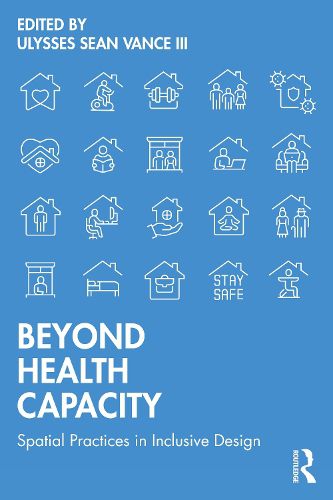Readings Newsletter
Become a Readings Member to make your shopping experience even easier.
Sign in or sign up for free!
You’re not far away from qualifying for FREE standard shipping within Australia
You’ve qualified for FREE standard shipping within Australia
The cart is loading…






Beyond Health Capacity: Spatial Practices in Inclusive Design sheds light on the systemic challenges communities with limited access to medical support and health maintenance have endured. It emphasizes how approaching medical interventions through non-traditional health facilities can positively impact health's social and environmental impact. Health capacity is an emerging consideration for optimizing a building design to meet health criteria based on physical, virtual, historical, or social space. These emerging practices can be focused on by interrogating the role of planning, construction, and urban design in addressing public health needs, alongside considering access and social justice as an agency in design. This book reflects on past and present efforts interrogating the practical application of inclusive design practices in resolving the spatial challenges of health reform.
By focusing on examples experienced during the pandemic and after, each chapter offers an overview documenting these experiences as approaches to these new competencies, reimagining urbanism around health, and proposing new criteria for the future of healthcare.
This book is essential for students and practitioners working in architecture, community planning, urban design, landscape architecture, and public health.
The Open Access version of this book, available at http://www.taylorfrancis.com, has been made available under a Creative Commons Attribution-Non Commercial-No Derivatives (CC BY-NC-ND) 4.0 license.
$9.00 standard shipping within Australia
FREE standard shipping within Australia for orders over $100.00
Express & International shipping calculated at checkout
Beyond Health Capacity: Spatial Practices in Inclusive Design sheds light on the systemic challenges communities with limited access to medical support and health maintenance have endured. It emphasizes how approaching medical interventions through non-traditional health facilities can positively impact health's social and environmental impact. Health capacity is an emerging consideration for optimizing a building design to meet health criteria based on physical, virtual, historical, or social space. These emerging practices can be focused on by interrogating the role of planning, construction, and urban design in addressing public health needs, alongside considering access and social justice as an agency in design. This book reflects on past and present efforts interrogating the practical application of inclusive design practices in resolving the spatial challenges of health reform.
By focusing on examples experienced during the pandemic and after, each chapter offers an overview documenting these experiences as approaches to these new competencies, reimagining urbanism around health, and proposing new criteria for the future of healthcare.
This book is essential for students and practitioners working in architecture, community planning, urban design, landscape architecture, and public health.
The Open Access version of this book, available at http://www.taylorfrancis.com, has been made available under a Creative Commons Attribution-Non Commercial-No Derivatives (CC BY-NC-ND) 4.0 license.